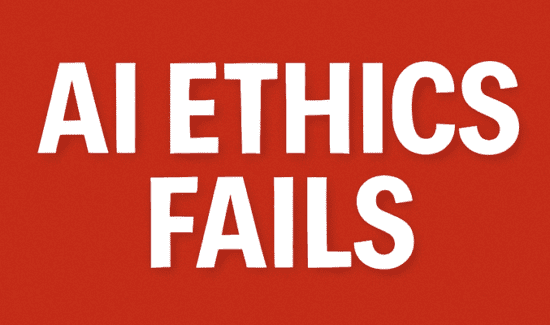Top Opportunities for Tech Companies in the Second Half of 2024

EY’s Ken Englund offers his take on the top opportunities for tech companies in the second half of 2024. This article originally appeared on Solutions Review’s Insight Jam, an enterprise IT community enabling the human conversation on AI.
It’s hard to believe we’re already halfway through 2024. So, what can tech companies expect for the remainder of the year? We are seeing rapid and continued progress in the adoption of generative artificial intelligence (GenAI) as a transformative technology for enterprises. Companies are experimenting with GenAI to improve outcomes and support their workforce. Simultaneously, technology companies are driving GenAI adoption across industries by ramping up go-to-market strategies and accelerating investment across the entire tech stack – from chips and components to large language models (LLMs) and software toolkits.
With this in mind, here are five key areas of focus and opportunities that are central to the average tech company’s priority list in the second half of the year:
Experiment with GenAI in Targeted Front-Office and Back-Office Use Cases
A recent EY poll found that 72 percent of tech leaders believe their employees use AI daily in the workplace. Further evidence shows that GenAI significantly impacts business objectives; for instance, software development can be completed 56 percent faster with GenAI coding copilots.
To avoid overly diluting their investment dollars, we can expect companies to continue identifying the most transformational GenAI opportunities in the latter half of 2024. While the GenAI hype remains high, awareness of its costs is increasing — 88 percent of CFOs are raising the investment hurdle rate. Business leaders should seek cost-effective GenAI opportunities in the back office, rather than focusing exclusively on enhancing existing products and services.
Shape Corporate Investment Strategy Around the AI Roadmap to Unlock in-Demand Talent and Advance Data Readiness
Large sums are currently being spent on AI-enabling chipsets and infrastructure, primarily to reduce dependence on state-of-the-art GPUs that still remain in short supply nearly four years after the initial shortage in 2020. Tech companies are also heavily investing in AI startups, often open source, and driving a steep increase in valuations. As regulatory scrutiny on large acquisitions, especially around AI, continues, many tech companies looking to expand GenAI or machine learning capabilities are exploring alternatives, and are willing to pay significant amounts to acquire the AI capabilities and talent needed to stay competitive. Further, as geopolitical tensions escalate and competition for ecosystem partners and top talent heats up, it’s becoming increasingly imperative to establish additional supply lines in emerging markets.
Going into 2025, rather than focusing on models, many enterprises will focus on the two key elements driving GenAI: talent and data. This includes renewed emphasis on acquisitions aimed at accessing new talent, retraining programs for employees lacking in-demand skills, and creating new partnerships to obtain large datasets to fuel their AI models.
Harness Platform Business Models to Industrialize and Scale Advancing Technologies
Evidence is growing that more technology companies are investing in platform business models, and laggards not yet matching their investment plans are falling behind. This push to maximize the value of platform business models aligns with concerns about the digital business execution gap, the second-biggest risk to profitability highlighted in IDC’s Worldwide CEO Survey 2024.
In the next six months, tech companies are likely to continue investing in their platform strategies, particularly given a significant increase in their ROI expectations. Additionally, leading platform companies will shift focus towards the profitability of their platform offerings, rather than market share alone. These leaders are expected to continue forming crucial partnerships and alliances to unlock new data assets and infrastructure, ultimately increasing their market share against competitors
Invest in New Forms of Digital Infrastructure in the Burgeoning “Edge Economy”
New forms of digital infrastructure are powering new capabilities and decision-making across industries, with 83 percent of companies of companies currently investing in or planning to adopt edge computing by 2030. And tech companies, more than any other industry, view edge as a complementary stack to their 5G investments.
As investments in edge deployments transition from pilot phases to full-scale implementation, I anticipate a swift rise in the demonstrated benefits of edge computing for the enterprise. Further, the importance of access to digital infrastructure will only become more evident as the compute needs of GenAI and other emerging technologies continue to grow and embed into daily functions.
Prioritize Energy Efficiency of Data Centers in Environmental Efforts, as the World Shifts from Compute Constraint to Energy Constraint
As the amount and density of data centers increases, so do the energy requirements needed to run these data centers. And with tech companies making pledges to progress sustainability efforts towards net zero, several data center operators have signed deals with energy suppliers to deliver on these green energy promises. At the same time, the demand for physical computing capacity continues to rise.
We are shifting rapidly from a society constrained by computing power to one constrained by energy resources. As new data factories surface, energy infrastructure will be severely tested, especially if the number of electric vehicles on the road keeps increasing at projected speeds. Global electricity grids may struggle to meet this heightened demand, potentially jeopardizing energy security and delaying decarbonization efforts.
For tech companies looking to maintain or increase their critical competitive edge, refreshed thinking around GenAI and platform strategy investments, the increasing talent shortage, the edge economy, and environmental constraints will become essential.



